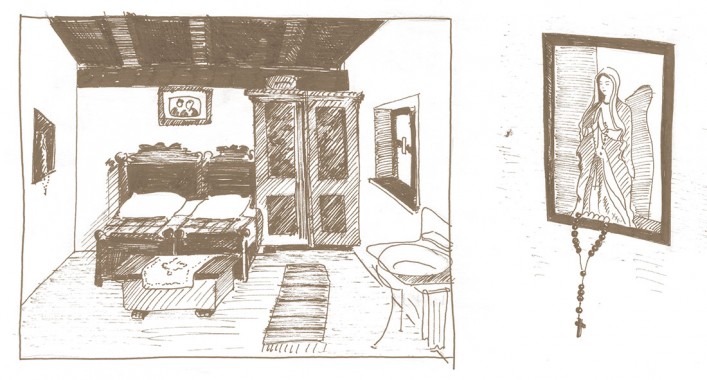Bedroom
The bedroom was usually located above the konoba, that is, the cellar. The ceiling was made of wickerwork, or rarely of raw planks. The roof was not made of straw thatch; however the houses were covered with flagstone or tile.
There were beds and a chest in the room, while the wealthier families had also two night stands.
There were beds and a chest in the room, while the wealthier families had also two night stands.
There were different kinds of beds, the simplest being straw thrown on the floor before going to sleep. Another kind was a bed made of fabric nailed to two boards. The third kind included a bed called koćeta. Rich families had wooden or iron beds, while the poor ones slept on straw-beds filled with corn leaves. Children slept on the floor, youngsters on the bed with fabric nailed to the boards, parents on a koćeta, and the oldest members of the family on a real bed, if there was one.
There was a chest next to bed, and nightstands and a mirror in richer houses. Dota, that is all the clothing that belonged to the daughter, was kept in the chest. This included socks, embroidered cloths, towels, shirts, and so on. Dota included clothing for a daughter getting married. Shortly before the wedding, the groom’s father would come to the bride’s house accompanied by his own daughter to collect the chest. Personal documents were kept in a military suitcase, if the family owned one.
Traditional clothing and footwear worn every day is exposed in the wardrobe. Opanci, a kind of footwear typical for the Balkans, made of tanned leather and lately of rubber, make an essential part of the collection. Opanci were worn by both men and women, every day as well as in special occasions. There was usually a crucifix and a rosary above the bed and since the 1920s a framed wedding picture. There was usually one window, drawn with curtains on the inside and shutters on the outside.


